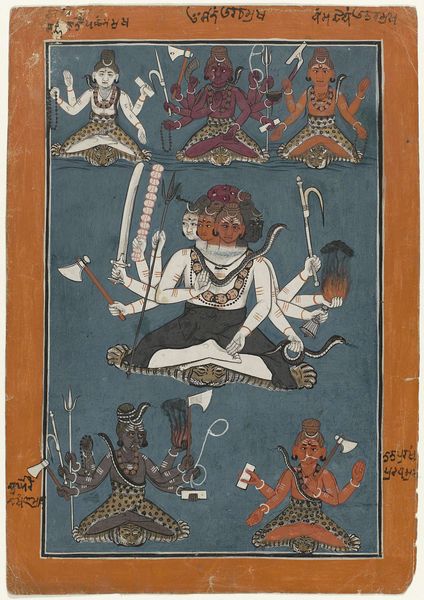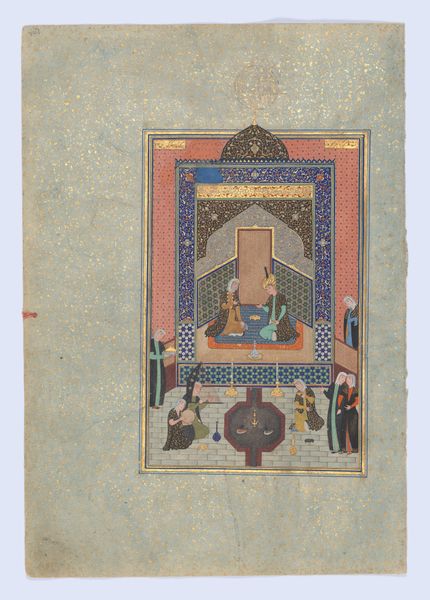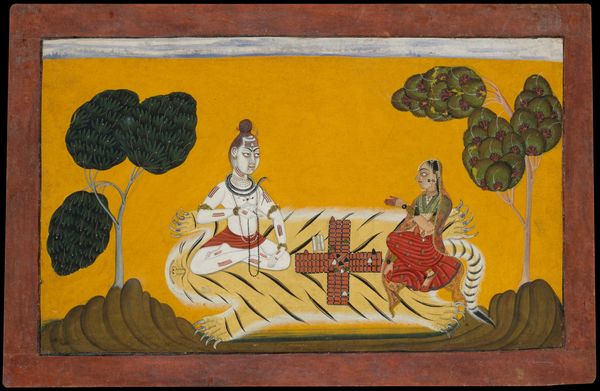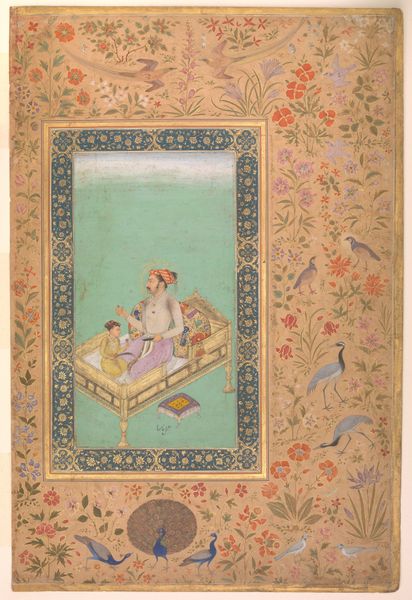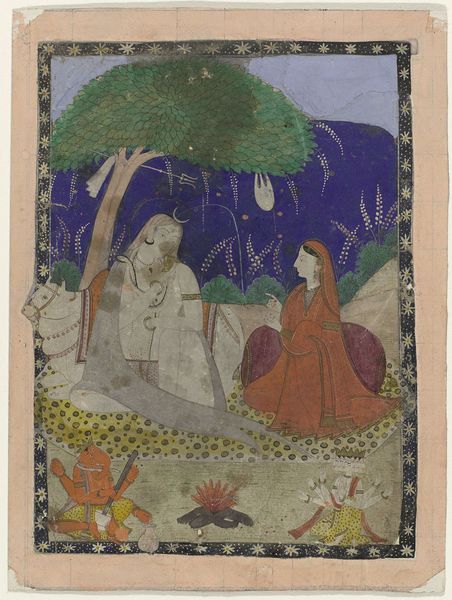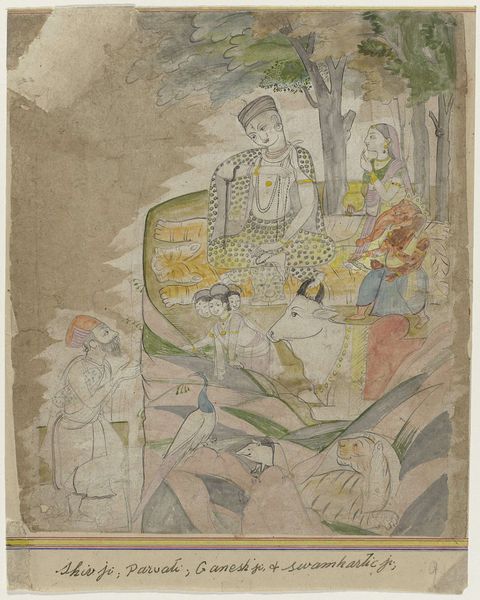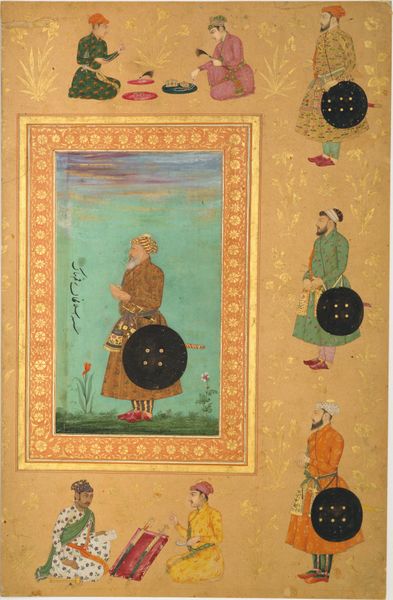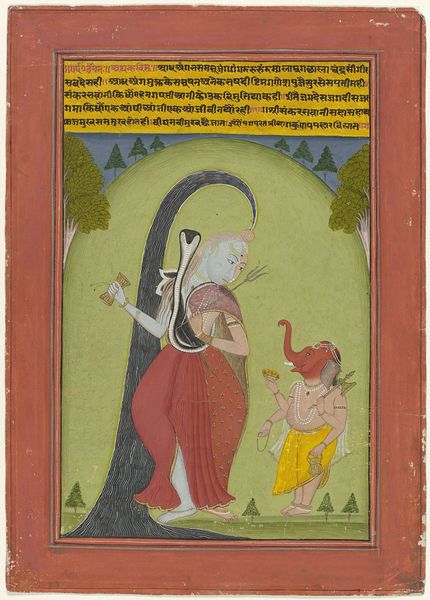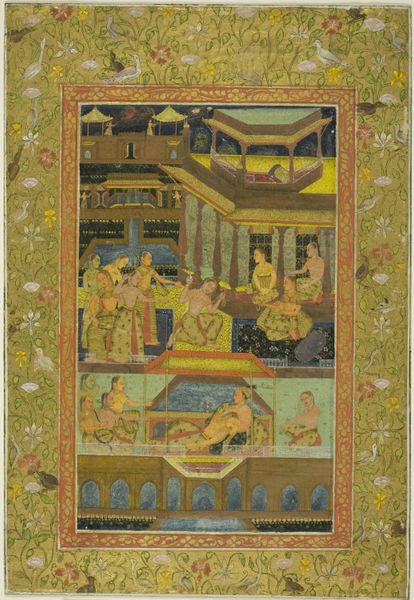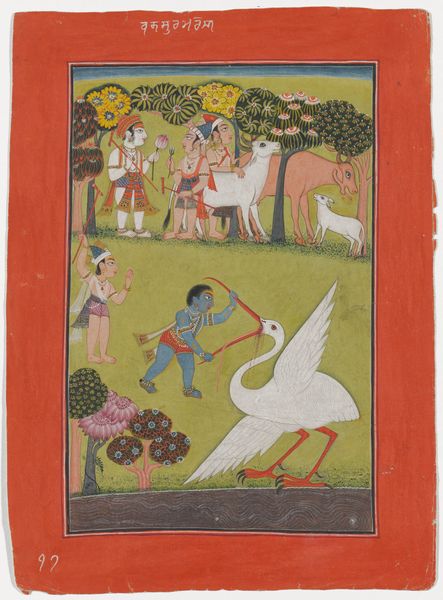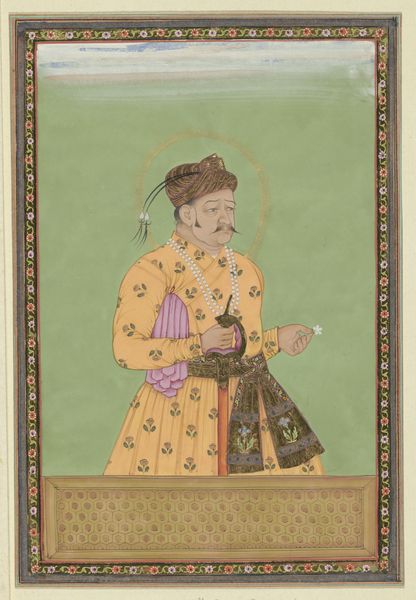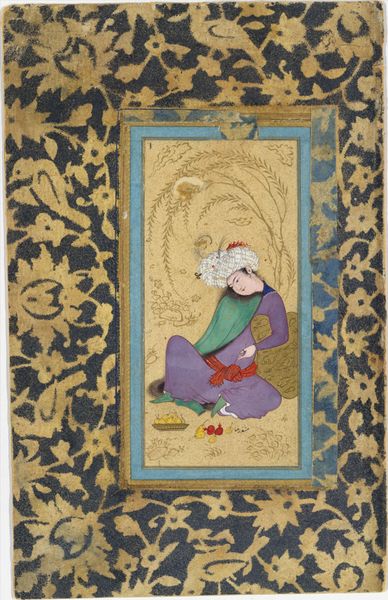
painting, watercolor
#
water colours
#
painting
#
asian-art
#
figuration
#
watercolor
#
watercolour illustration
#
miniature
#
watercolor
Dimensions: 8 1/8 × 5 5/8 in. (20.64 × 14.29 cm) (image)25 3/4 × 21 3/4 × 1 in. (65.41 × 55.25 × 2.54 cm) (outer frame)
Copyright: Public Domain
This Indian painting presents Shiva Ardhanarishvara, a deity that is half-male and half-female, embodying the integration of masculine and feminine principles. Shiva, on the left, is depicted with blue skin, while his counterpart, Parvati, is on the right, adorned with jewelry, together sitting on a tiger skin. The composite form of Ardhanarishvara extends back through time. We see echoes in Hermaphroditus, a figure from Greek mythology who merges male and female forms, embodying a union of opposites. This symbol represents the reconciliation of binary forces within the individual psyche, and the broader cosmos. The serpent, a recurring motif, often symbolizes cyclical time and rebirth. Observe the snake coiled around Shiva’s neck, a symbol that appears in ancient Near Eastern art, where snakes were associated with healing and immortality. The psychological allure of Ardhanarishvara lies in its potential to evoke wholeness. This image taps into our collective yearning for balance and unity. The tiger skin is another symbolic motif used as an emblem of power and control over instincts, a theme that frequently recurs in ancient art. These motifs resurface, evolve, and take on new meanings across different eras.
Comments
minneapolisinstituteofart almost 2 years ago
⋮
In this hypnotic image, the Hindu god Shiva and his wife Parvati share one body, in the form known as Ardhanarisvara, ‘lord whose half is woman.’ It reveals Shiva as a symbol of his omnipotence, the seed and womb of all creation and destruction. Here, a razor-sharp vertical divides and unites the image, with the artist depicting the respective halves with individualized dimensionality. Shiva assumes the role of bearded ascetic, wearing a garland of skulls, with his attributes, the trident, kettle-drum, and bull vehicle, Nandi, at his side. His right hand tames a snake while another serpent wraps Shiva’s topknot, which in turn, catches the river goddess Ganga on her decent from heaven to the earth. Parvati, herself a manifestation of Devi (The Great Goddess), and embodiment of Shakti (female energy), is princess and daughter of the Himalaya—the source of the Ganges River and abode of the loving holy family. The mauve mountain and exuberant, lotus-filled pool are typical of the Bundi school in Rajasthan, and respectively represent Lake Manasarovar and Mt. Kailash in Tibet.
Join the conversation
Join millions of artists and users on Artera today and experience the ultimate creative platform.
